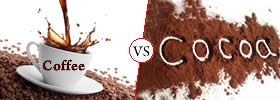Difference between Bacteria and Microorganisms
Key Difference: Bacteria (singular: bacterium) are single celled micro-organisms that belong to the group of Prokaryotics. Microorganism refers to any of the organisms that can only be seen under a microscope. Bacteria are also microorganisms.
.jpg) Bacteria are single celled microorganisms that have a varied range of metabolic types, geometric shapes and environmental habitats. Their structure lack nucleus and customarily have no organelles.
Bacteria are single celled microorganisms that have a varied range of metabolic types, geometric shapes and environmental habitats. Their structure lack nucleus and customarily have no organelles.

Microorganisms include all the organisms that cannot be viewed by the naked eye. Hence, a microscope is used to see these kinds of organisms. This is due to the small size of these organisms.
Some of the characteristics of both are listed below in the table:-
|
|
Bacteria |
Microorganisms |
|
Definition |
Bacteria are single celled microorganisms that belong to the group of Prokaryotics. |
A small life form that requires a microscope for it to be seen. |
|
Habitat |
Bacteria are found everywhere. They can survive and thrive in water, on skin, surfaces, carpet, earth, stone and especially dead flesh. |
Microbes thrive on land, in the oceans and on human skin. They even survive in extreme places like near deep-sea vents. |
|
Domain |
Prokaryote |
Prokaryote, Eukaryote |
|
Nucleus |
Absent |
Depends upon the type of microorganism |
|
Size |
A few micrometers in length |
Variable size, but all are tiny |
|
Shape |
Come in three different possible shapes:- Cocci - sphere shape Bacilli - rod shape Spirella - spiral shape |
Bacteria come in various shapes:- Cocci - sphere shape Bacilli - rod shape Spirella - spiral shape Algae - some are round and others are oval. Some look like leaves and others like fat commas. Protozoa
Viruses- Polyhedral or multi-sided. |
|
Usefulness |
Some are useful |
Used in larger scale production of alcohol, cine and acetic acid. Used in the making of antibiotic tablets, capsules or injections like penicillin. In the vaccines and for increasing soil fertility. |
|
Antibiotics |
Kill Bacteria. |
May or may not affect, depending upon the type of micro-organisms. |
|
Diseases Caused |
Cholera, tuberculosis, lyme disease, pertussus, salmonella, staph infections, strep throat, leprosy, tetanus, diptheria, E.coli, flesh eating (necrotizing fascitis) rickets, etc. |
Cholera (bacteria), Polio (virus), Malaria (Protozoa), etc. |
|
Source of Energy |
Phototrophs that use light as energy source. Chemotrophs, which use organic and inorganic chemicals as energy source. |
Hetrotrophs that rely on other organisms for food. Phototrophs that use light as energy source. Chemotrophs, which use organic and inorganic chemicals as energy source.
Autotrops capture energy stored in the environment as sulfur compounds, or similar. |
|
Living |
Yes |
Yes, but also includes virus (considered to be non-living) |
|
How they are transmitted |
Direct contact with an infected person Contaminated food or water (Salmonella, E.coli) Dirty objects (tetanus) Infected animals (rabies) |
Through air Through contact with animals Through contaminated food Through touch Through water |
|
Reproduction |
Bacteria reproduce through binary fission, they split into two cells. |
Microorganisms reproduce through sexual or asexual reproduction, depends upon the type of microorganism. |
|
Motility |
Many of the bacteria move through the environment using a structure known as the flagellum. |
Depends on the type of microorganism:- Molds are non- motile, Cyanobacteria can glide. Amoeboid Protozoan and Euglena are capable of moving across solid surfaces, most of the Bacteria can move, etc.
|
|
Examples |
Lactobacillus, nitrogen-fixing Bacteria, Bifidobacterium, Helicobacter pylori, Staphylococcus, etc. |
Types of microorganisms include Bacteria, Mold and Mildew. |
Image Courtesy: ciencedaily.com, dornsife.usc.edu









Add new comment